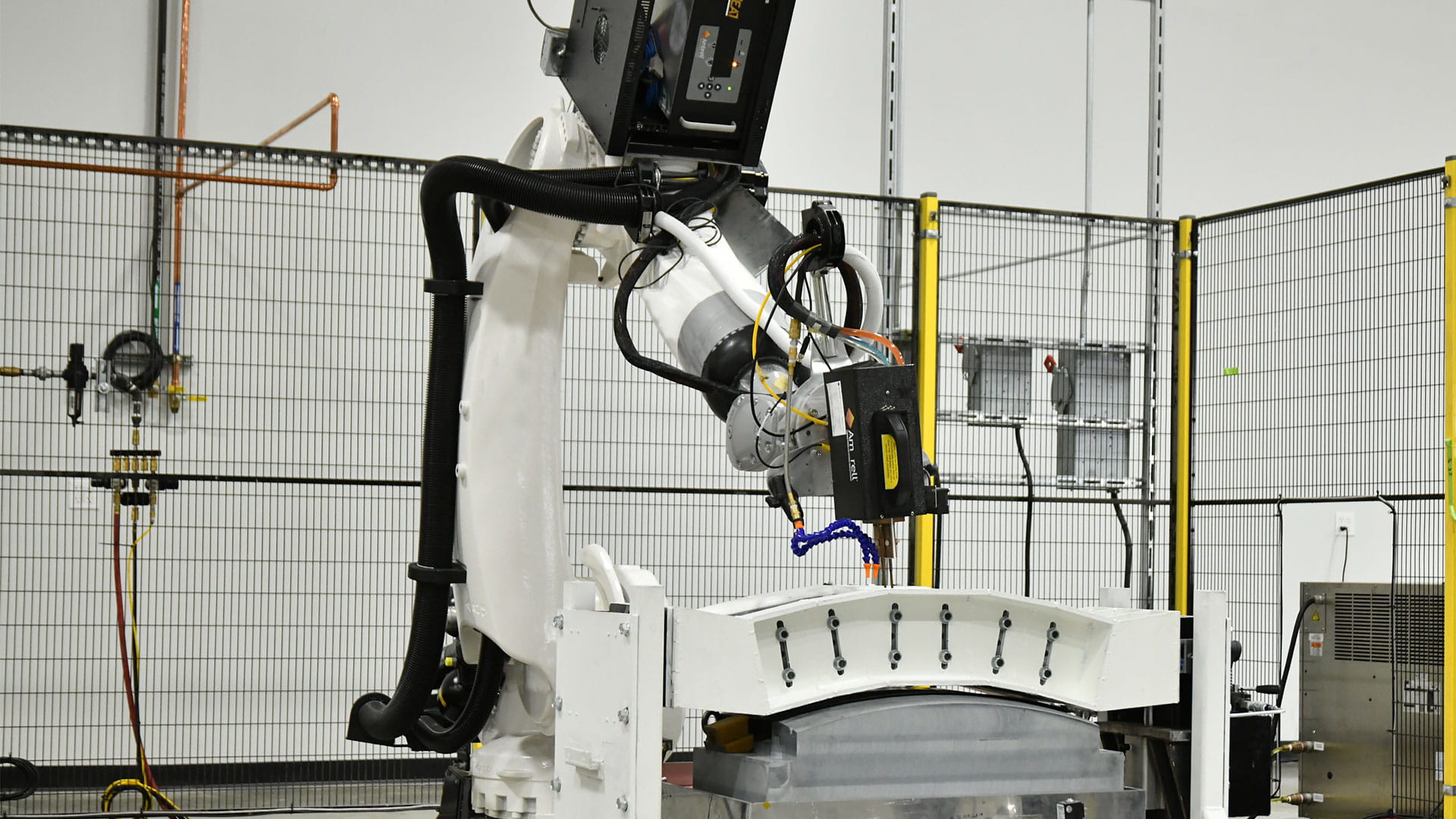Building a sustainable future is undoubtedly growing in importance as airlines face greater scrutiny to reduce their carbon footprint. Rising fuel costs and supply chain delays have prompted industrial engineers at Collins Aerospace to introduce new and redesigned products to reduce energy usage, decrease aircraft weight, accelerate production and improve overall aircraft quality.
Now through increased use of thermoplastic composites, Collins is driving sustainability in new and exciting ways: a feat that’s not only good for the workplace, but also good for the airline industry and the communities in which we operate. These “greener” thermoplastic composites are being used for a variety of aircraft parts to reduce energy consumption during the manufacturing process and decrease aircraft weight to lower fuel burn. That reduced fuel burn provides cost savings for the customer while also lowering carbon emissions for the environment.
Reducing fuel emissions
“At Collins, one of the biggest areas where we can most dramatically impact sustainability is via the weight and resiliency of our products – so that’s where our Advanced Structures business is focusing its efforts,” said David Manten, general manager of Engineered Thermoplastics. “Lighter aircraft equate to lower emissions and a greater ability to reach our industry’s goal of being carbon zero by 2050.”
With our latest thermoplastic welding technologies, we’re developing integrated structures, eliminating the need for thousands of fasteners -- all of which add weight to an aircraft. We’re also expanding our use of thermoplastic composite parts. Although thermoplastics have been around for decades, we’ve developed specific technologies that enable the production of larger and more complex parts as well as the integration of parts through welding. Both ways will reduce the need for metallic fasteners which automatically result in a decreased weight solution.
As an example, consider the total number of seats on an aircraft, how much each seat currently weighs, and the savings that could result if there was a way to decrease just a percentage of each seat’s weight. For a 200-passenger aircraft, it could add up to a considerable difference. Lighter seats would mean a lighter aircraft and therefore a corresponding reduction in carbon emissions. Achieving that goal is why we’re currently working to incorporate lighter thermoplastic materials into seats and a variety of other aircraft components.
“Our aerospace customers are depending on us to drive sustainability throughout our supply chain. Offering lighter weight products by incorporating thermoplastic composites is a great example of how we are meeting this need,” Manten said.
In fact, thermoplastic composites can reduce the weight of structural components by up to 50 percent as compared to metallic solutions and up to 20 percent when compared to thermoset solutions.
Superior weight savings
Decreasing energy consumption
Most of today’s aircraft are manufactured using traditional materials, such as thermoset composites, that consume a massive amount of energy to manufacture. Here, the manufacturing process requires products to be cured in large autoclave ovens that consume large amounts of energy to get the necessary amount of heat and pressure.
In contrast, thermoplastic composites don’t require the same chemical reactions as thermosets so they can be manufactured via more efficient, out-of-autoclave processes that greatly reduce energy usage. With thermoplastics, manufacturing time can be reduced from hours to minutes while the material is shaped into its desired geometry.
Switching from thermosets to thermoplastic composites also adds to energy efficiency as cold storage of thermoset materials is eliminated.
Recycling capability
There are two hallmarks to the recyclability of thermoplastic composites: durability and reuse. First, thermoplastic composites have a higher resistance to impact and fatigue compared to thermosets. Ensuring parts can last longer is key to future circular economies.
Second, thermoplastic composite products can be fully recycled at the end of their lifecycle, meaning they can be remelted, reshaped and reused in other industries or for other parts – making them more attractive than metallic and thermoset parts that often go straight into the landfill.
When you narrow it down, thermoplastic composite technology plays an important role in sustainability for the aerospace industry.
“At Collins Aerospace, we don’t just have our eyes on a more sustainable future: we’re building it every day,” Manten explained. “Through forward-thinking design, science-based materials selection and improved manufacturing processes, we’re working to reduce aircraft weight for greater fuel efficiency while at the same time incorporating more environmentally responsible materials, like thermoplastic composites, into aircraft components.”

